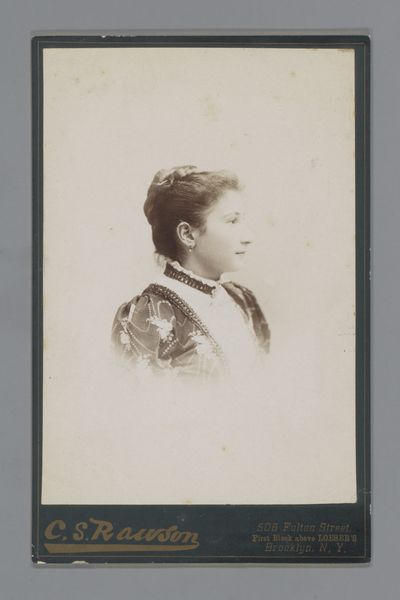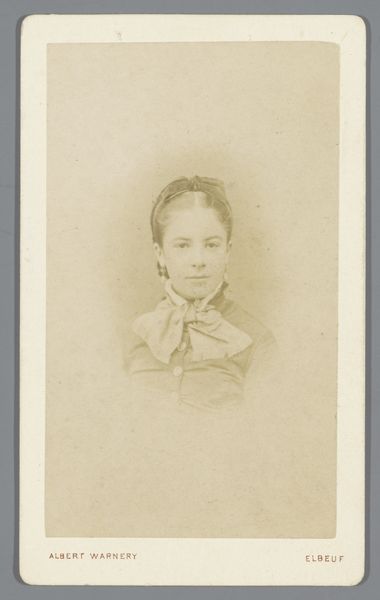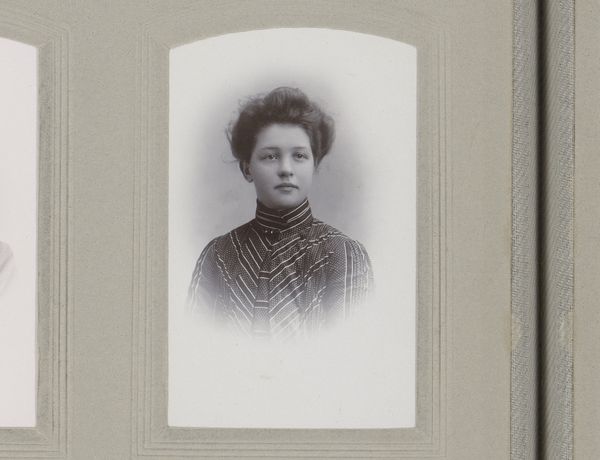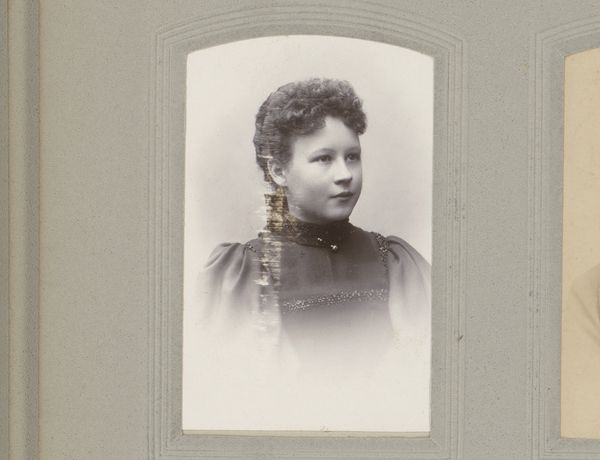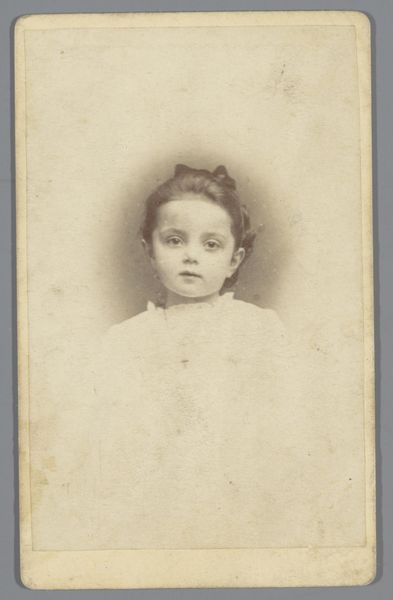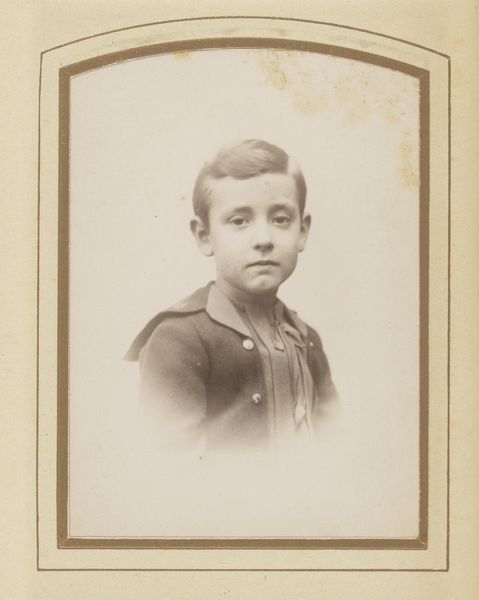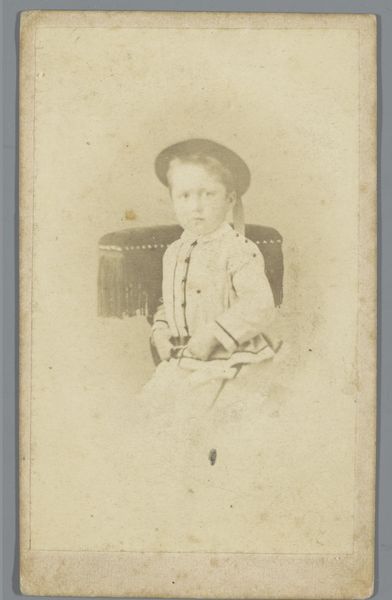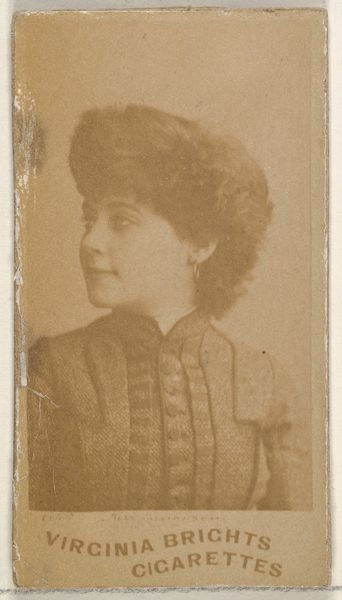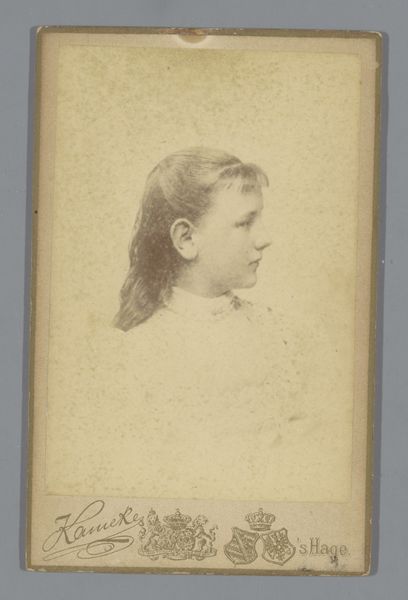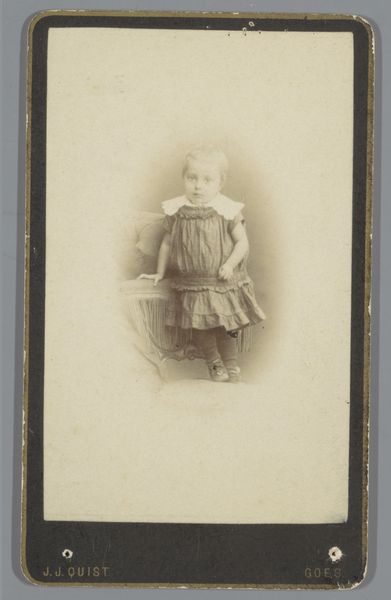
photography, gelatin-silver-print
#
portrait
#
photography
#
historical fashion
#
gelatin-silver-print
Dimensions: height 104 mm, width 65 mm
Copyright: Rijks Museum: Open Domain
Curator: Here we have an intriguing gelatin silver print simply known as "Portrait of an Unknown Woman" dating from around 1891 to 1912. It's by Friedrich Carel Hisgen. Editor: My first impression is a feeling of delicate poise. The soft focus lends an almost dreamlike quality, and her gentle gaze holds a hint of melancholy. Curator: The piece certainly captures the zeitgeist of portraiture during that period, focusing on an intimate and seemingly private moment. This image allows us a peek into the rising Dutch middle class and the popular photographic conventions of the time. What do you see reflected in her clothing? Editor: The high-necked dress with puffed sleeves is undoubtedly characteristic of late 19th-century fashion. What stands out to me is the implicit story that such images rarely capture. As we look, it makes me consider gender expectations and notions of beauty back then, which were largely influenced by the patriarchy and European beauty standards. How were such conventions upheld and what was their role? Curator: It also opens discussions about the very concept of representation and power at the turn of the century. Photography, although relatively accessible, wasn't entirely democratic, especially when thinking about portraiture. To have one's portrait taken was still, to a certain degree, an act of claiming space within a structured society. It raises questions regarding who got to be remembered and seen and how fashion of the era, down to its pearl studs, signified status and identity. Editor: Yes, and it highlights the critical need for art history to explore not only who is represented but who is *not* and what structures dictate those omissions. It also leads to an even deeper, more urgent, call to examine Western art traditions in totality, along with their colonial legacies. Curator: It definitely compels one to question the systems within art history itself, who archives images like this, and whose narrative gets prioritized in major art institutions like the Rijksmuseum, where this work currently resides. It’s not just about showcasing beautiful images, but understanding the larger forces at play. Editor: Right. Seeing "an unknown woman" humanizes history. Her eyes remind me that behind grand narratives exist countless unseen individual realities. I love art for allowing such an intersection of viewpoints. Curator: Precisely. "An Unknown Woman" transcends being just an archival photograph—it becomes an impetus for thoughtful introspection about power and representation and art history itself.
Comments
No comments
Be the first to comment and join the conversation on the ultimate creative platform.
